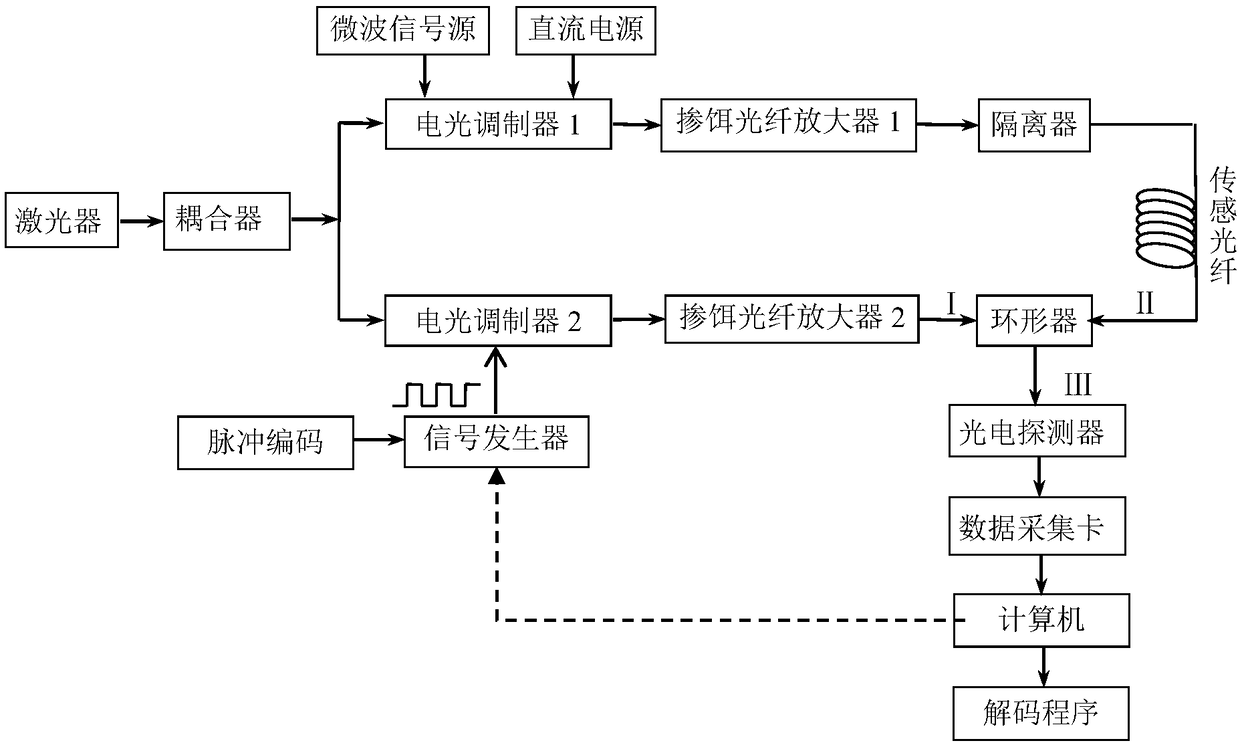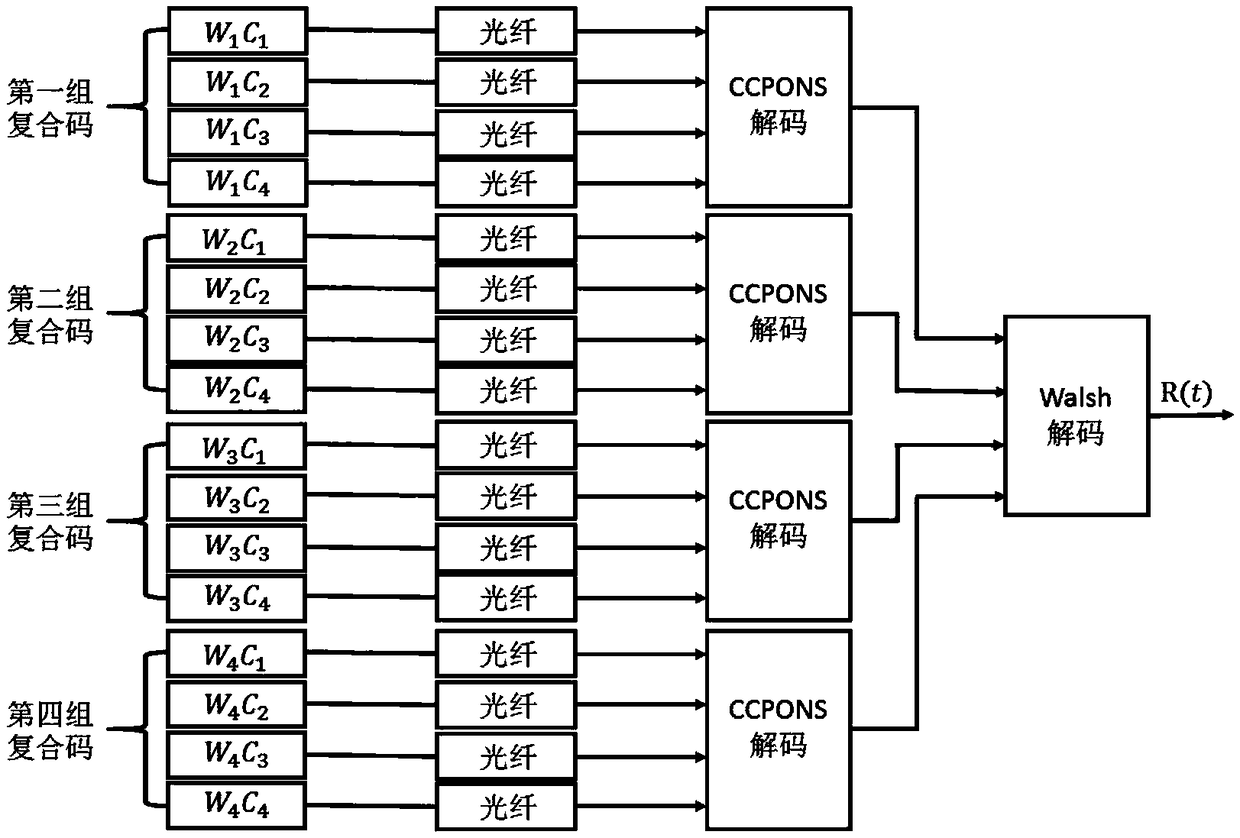Method for improving signal to noise ratio of BOTDA system based on combined pulse code
A technology that combines pulse and signal-to-noise ratio, applied in the direction of converting sensor output, measuring device, instrument, etc., can solve the problem of limited improvement of signal-to-noise ratio and inability to meet the requirements of high signal-to-noise ratio of the system.
- Summary
- Abstract
- Description
- Claims
- Application Information
AI Technical Summary
Problems solved by technology
Method used
Image
Examples
Embodiment 1
[0061] The TSL-510 tunable laser from Santec Company is selected as the carrier light source. The wavelength range of the laser is 1510nm-1630nm, and the set wavelength is 1550nm; both modulator 1 and modulator 2 are MXAN-LN-40 from Photline Company, and the bandwidth is 32GHz ; The DC bias voltage is 9V; the amplifier is an erbium-doped fiber amplifier from ZTE Corporation, the wavelength range is 1530-1565nm, and the amplification factor is greater than 35 times; the microwave signal source is 8257D from Agilent; the pulse pattern signal generator from Agilent , the model is 81134A, the frequency range is 15MHz~3.35GHz; the photoelectric detector is SD-48 of Tektronix, the bandwidth is 35GHz; the sensing fiber is the fiber of YOFC Optical Fiber and Cable Co., Ltd., and the stimulated Brillouin gain linewidth is 40MHz, Brillouin frequency shift, the length is 300 meters; the isolation degree of the optical isolator is greater than 40dB; the data acquisition card is PCI-5114 da...
PUM
| Property | Measurement | Unit |
|---|---|---|
| Wavelength | aaaaa | aaaaa |
| Bandwidth | aaaaa | aaaaa |
Abstract
Description
Claims
Application Information
 Login to View More
Login to View More - R&D
- Intellectual Property
- Life Sciences
- Materials
- Tech Scout
- Unparalleled Data Quality
- Higher Quality Content
- 60% Fewer Hallucinations
Browse by: Latest US Patents, China's latest patents, Technical Efficacy Thesaurus, Application Domain, Technology Topic, Popular Technical Reports.
© 2025 PatSnap. All rights reserved.Legal|Privacy policy|Modern Slavery Act Transparency Statement|Sitemap|About US| Contact US: help@patsnap.com



